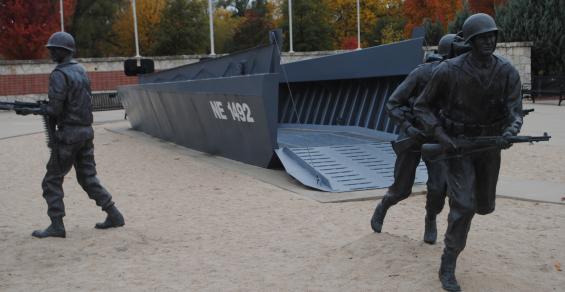Dwight Eisenhower called Columbus, Neb., native Andrew Jackson Higgins “the man who won the war for us.” That’s high praise from the supreme commander of Allied forces at D-Day in World War II.
Higgins designed the innovative landing craft, vehicle, personnel — or LCVP — boats that allowed for amphibious landing of Allied troops, weapons and equipment on the beaches of Normandy in 1944. “If Higgins had not designed and built those LCVPs, we never could have landed over an open beach,” Eisenhower noted.
Columbus roots
Born in Columbus in 1886, Higgins spent his early life around the shallow waters of the Platte and Loup rivers. He built his first boat in the basement of the family home when he was 12. Moving south in 1906 to work in the lumber and boat business, he eventually would hold 30 patents covering amphibious landing craft and vehicles.
He established Higgins Industries Inc. in New Orleans, his company that at one time during the war had designed more than 90% of the vessels being used by the U.S. Navy. Higgins died after a stroke in New Orleans in 1952, and he is buried at Metairie Cemetery.
Dedicated in 2001, the memorial in his name in West Pawnee Park in Columbus is centered around the LCVP designed by Higgins, with statues of soldiers exiting this full-sized boat on a sandy beach. A nearby bronze sculpture depicting male and female soldiers honors the National Guard and Reserves. Another life-sized statue honors Higgins himself.
Freedom Eagle
After the U.S. was struck by terrorist attacks on Sept. 11, 2001, pieces of the devastated World Trade Center in New York City were secured and built into a sculpture at the Higgins Memorial, honoring those who were involved in the war against terrorism. A large bronze Freedom Eagle, with a wingspan of 8 feet, towers over the steel sculpture.
Learn more at andrewjacksonhigginsmemorialfoundation.org.
Down the Road: The Andrew Jackson Higgins National Memorial remembers a native son.




